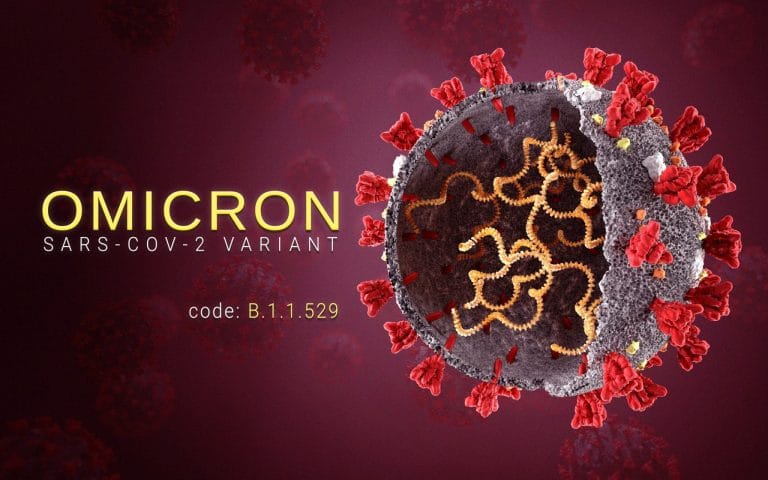Fall allergies are a serious seasonal allergic reaction from a commonly seemingly harmless particle. Our immune systems normally prevent germs, infections, and other harmful bacteria from entering our bodies.
However, the immune response can respond to a non-harmful substance – such as plants, pet dander, fungus, or a specific food – by making a particle known as an immunoglobulin E (IgE) antibody.
“Allergens” are agents that cause this IgE reaction, and they can enter your body through different routes.
Here are some examples:
- If you inhale allergens in (for example, pollen grains in the atmosphere)
- If they are injected into your bloodstream (for example, a bee bite, a direct injection drug)
- If you eat them (for example, food ingredients, pills)
- If you hold them (e.g., latex gloves)
Many persons breathe easy when the temperature cools down in the early fall, but even so, allergy and breathing problems sufferers don’t really. The end of the summer heralds the start of allergy symptoms season.
symptoms include breathlessness, wheezing, a blocked nose, and red-eye irritation.
Is it common to have fall allergies?
Fall-Allergies are pretty common and among the most popular serious health problems people suffer from. It’s difficult to find out how many people have allergies, but we can get a sense by looking at numbers for different types of fall allergies.
Fall allergies are common among what kind of people?
So even though nobody is brought up with allergies, you may have a DNA risk in developing one. If both your mom and dad have allergies, you have a 75% risk of receiving allergies.
Kids are more likely than adult people to be detected with an allergic response. Most allergy symptoms are expressed first in childhood, and they are less usual later in adulthood. On the other hand, (e.g., Soybeans, almonds, and raw fish) have a long life span. Some kids grow out of a babyhood allergy symptoms have been identified to come back to an older age.
Energize Your Day with these 20 Foods that Increase Energy
Allergies that are more serious at some times of the year, such as fall allergies:
In warm, windy conditions, pollen is found in the air. The main timing of peak season varies depending on the specific weather, geographical area, and rainfall patterns. Still, in most parts of the world, plant allergens are most popular in the spring, greenery pollens in the warmer months, and flower pollens in the fall. The pollen numbers in your area are found on the Weather Channel or online.
Multiple symptoms and kinds of fall allergies reactions:
Fall Allergies can produce illness in different areas of the body due to the type of irritant and how you are affected.
Deny the reality that signs can look and feel completely different; they are usually the same. Your body reacting to the allergens causes swelling in the targeted area. (inflammatory response)
Allergies to rhinoviruses-fall allergies:
Rhinitis (also known as fall allergies) is an inflammatory condition (swelling) of the inner nose layer. Many reasons are not sensitive, but if you have hay fever, you may have been affected by allergens such as:
- Pollen
- Plant
- Soybeans
- Pet dander
- Bags of dust
- Mold bacteria.
Itching of the nose and sore throat, watery or stuffy nose, sniffling, and ear blockage are all typical fall problems. It is usually associated with allergic diseases described by runny, sore, and red eyes affected by an allergen. Allergy symptoms of this nature can be seasonal or continuous all year.
Are you suffering from asthma? – fall allergies
Asthma signs can be caused by an allergic response in the lungs’ air sacs. Living in a fall allergies season causes swelling and inflammation in the lung airways, producing wheezing, difficulty breathing, and chest tightness. Even though allergic reactions are common asthma causal factors, many people realize asthma symptoms are largely caused by non-allergic causes such as:
- Illness
- Cigarettes
- fresh air
- workouts
Skin reactions: One other common area for allergic reactions to express is the skin surface. While some skin reactions occur due to direct contact with an irritant, many skin reactions are caused by an allergy to something you absorbed, such as meals or medicines. Honey bees – swelled up, scratchy, red markings that seem too quickly – are the most popular allergic skin responses.
Abnormalities of the digestive system
All of those are allergies to items we eat, such as food products or medicines. These allergens commonly cause multiple responses, resulting in symptoms in different areas in the body, such as the tummy, digestive tract, or other parts of the gastrointestinal system. The following are the most common gastrointestinal allergy signs:
- abdominal pain
- Dizziness
- Vomiting
- diarrhea
The use of some medications can provide relief by fall allergies
Medications are available when avoiding plants isn’t enough to keep your allergy symptoms under control. It’s important to know that treating the nose and top respiratory system symptoms can help with asthma attacks.
- Antihistamine: An antihistamine medicine is a good first option. These are commonly helpful in treatment, but these medicines can cause sleepiness. Your doctor may suggest different kinds until you know what works for you while not making you too uncomfortable. Suggest using both an antihistamine and a decongestant to relieve stuffiness.
- Steroid nasal spray: If the above advice does not ease your illnesses, you may want to consider using a steroid inhaler. Some patients relax from nose illnesses within minutes of using a steroid inhaler, while others report progress after a few days of use.
- Nasal disodium salt is another non-steroid inhaler option; this is a non-steroid nasal spray that, when used daily, helps stop nasal illnesses. On the other hand, you cannot use it for instant help. It is used for long periods, similarly without negative effects. That’s why you must use it because it is short-acting 4 to 6 times each day.
There are also many treatments if the above described are not working, like allergy shots. But use anything according to the doctor’s prescription.
The 3 important steps to fall allergies
1st step:
diagnosing symptoms
- Ask your doctor regarding your difficulty breathing.
- Your doctor carries tests to verify whether you have asthma or an allergy.
- Understand fall allergies, what it is, and how you treat them.
2nd Step:
The triggers
- Keeping a diary and getting fall allergies tests can help you determine what triggers your allergic symptoms.
- Know how to prevent your allergens and non-allergic risk factors once you’ve discovered them.
3rd step:
Treatments
- Having a good doctor will prescribe allergies control medication.
- Realize what your medicine does and how to take it correctly.
- Find how a written fall Allergies Action Plan can support you in handling your allergies
Conclusion:
Autumn and early fall do not have to be scary seasons. Ask your doctor before your fall allergies cause you to use boxes of tissues or be sidelined by respiratory problems. They will check your condition and give you the extra help you need. There is aid care available. It would help if you decided what works for you and then put your plan into practice.







